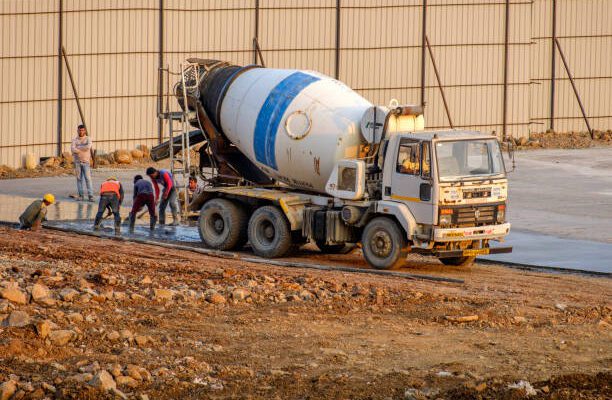When embarking on a construction project, whether it’s a new home, a commercial building, or a renovation, selecting the right construction materials is paramount to the success and longevity of the structure. The materials chosen can impact everything from structural integrity and energy efficiency to aesthetics and overall cost. This guide aims to provide a comprehensive overview of the factors to consider when selecting the best construction materials for your project.
Understand the Project Requirements
Before delving into material selection, it’s crucial to have a deep understanding of the project’s requirements. Consider the purpose of the structure, its location, environmental factors, and the intended lifespan of the building. For instance, materials suitable for a residential home might differ from those used in a high-rise commercial building.
Evaluate Structural Performance
The structural integrity of any construction project is of utmost importance. The materials chosen must be capable of supporting the intended load and withstanding environmental pressures such as wind, earthquakes, and other potential hazards. It’s advisable to consult with structural engineers who can recommend materials that align with the project’s specifications.
Consider Durability and Longevity

Longevity is a key consideration when selecting construction materials. Durable materials can significantly reduce maintenance and repair costs over the lifespan of the building.
Evaluate Environmental Impact of construction
In an era of increasing environmental awareness, selecting eco-friendly construction materials is not only a responsible choice but can also contribute to cost savings over time.
Analyze Energy Efficiency
Energy-efficient materials can contribute to reduced utility bills and a smaller carbon footprint. Insulation materials, windows with proper glazing, and roofing materials with high reluctance can all play a role in optimizing energy efficiency. Look for materials with high R-values (thermal resistance) and low U-values (thermal transmittance) to ensure effective insulation.
Factor in Aesthetics and Design of construction
The visual appeal of a building often depends on the materials used. Different materials can give rise to varying architectural styles, from modern to traditional. Consider the desired aesthetics and how the chosen materials will contribute to achieving the desired design.
Assess Maintenance Requirements
Some materials require more maintenance than others to retain their appearance and functionality. Wood, for example, may need regular sealing or painting to prevent deterioration, while materials like steel might require anti-corrosion treatments. Assess the long-term maintenance requirements and associated costs before making a decision.
Budget Considerations
Construction budgets are a significant constraint for most projects. While it’s tempting to opt for the least expensive materials, it’s essential to find a balance between cost and quality. Cheaper materials may lead to higher maintenance and replacement costs in the long run. Obtain quotes from multiple suppliers and consider the total cost of ownership over the building’s life cycle.
Availability and Lead Times
The availability of construction materials can impact project timelines. Some unique or specialized materials might have longer lead times or be subject to delays due to manufacturing or shipping issues. It’s advisable to choose materials that are readily available to avoid project slowdowns.
Regulatory and Code Compliance
Building codes and regulations set forth by local authorities play a critical role in material selection. Different materials have varying fire resistance ratings, load-bearing capacities, and other factors that must align with legal requirements. Ensure that the chosen materials meet or exceed these regulations to avoid potential legal issues.
Consultation with Experts for construction
Collaborating with architects, engineers, and contractors is essential when selecting construction materials. These professionals bring their expertise to the table, helping you navigate the intricate decisions involved in material selection. Their insights can lead to informed choices that align with the project’s goals and requirements.
Material Options for construction
There is a wide array of construction materials available, each with its advantages and disadvantages. Here are some common materials used in construction:
1. Concrete

Concrete is a versatile material known for its strength and durability. It’s used in foundations, walls, and floors. There are various types of concrete mixes, each with specific properties suited for different applications.
2. Steel
Steel is prized for its high tensile strength and is commonly used in structural frameworks, beams, and columns. It’s also used in roofing, reinforcing bars, and other applications.
3. Wood
Wood is a traditional construction material valued for its aesthetic appeal. It’s commonly used in framing, flooring, and finishing elements. Different types of wood have varying degrees of strength and durability.
4. Brick and Masonry

Brick and masonry materials offer excellent durability and fire resistance. They’re often used in walls, facades, and architectural detailing.
5. Glass
It allows natural light to enter spaces and can contribute to energy efficiency when properly insulated.
6. Insulation Materials
Insulation materials like foam, fiberglass, and cellulose help regulate indoor temperature and improve energy efficiency.
7. Metals
Aside from steel, other metals like aluminum, copper, and titanium find use in roofing, cladding, and decorative elements due to their corrosion resistance and aesthetic qualities.
8. Composites
Composite materials, such as fiber-reinforced polymers (FRP), offer high strength-to-weight ratios and are used in applications where traditional materials might fall short.
9. Sustainable and Recycled Materials
Materials like bamboo, reclaimed wood, recycled steel, and recycled glass are gaining popularity due to their Eco-friendliness and unique aesthetic appeal.
Conclusion
Selecting the best construction materials for a project involves a careful consideration of numerous factors, ranging from structural performance and durability to aesthetics and budget. By understanding the project requirements, consulting with experts.
And thoroughly evaluating available materials, you can make informed decisions that lead to a successful and enduring construction endeavor. Remember, each material choice contributes not only to the physical attributes of the building but also to its environmental impact and long-term sustainability.
Reference:
Buildbinder
Searching for tips to recycle the construction waste, what are you waiting for, click on the link below:
How to recycle and reuse construction waste




